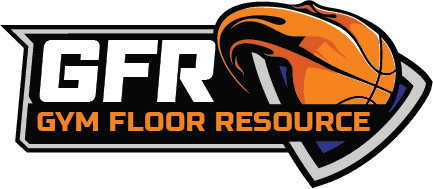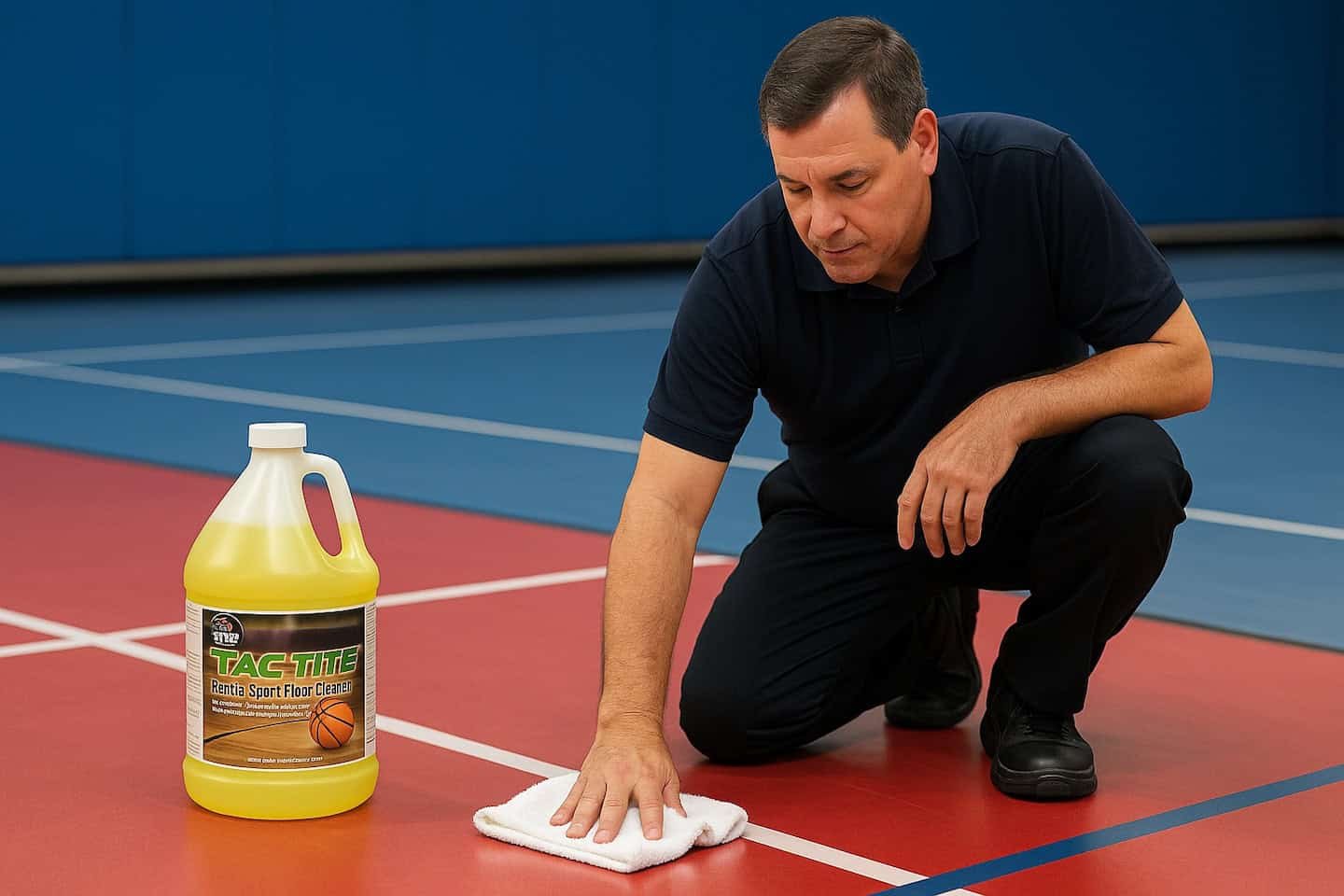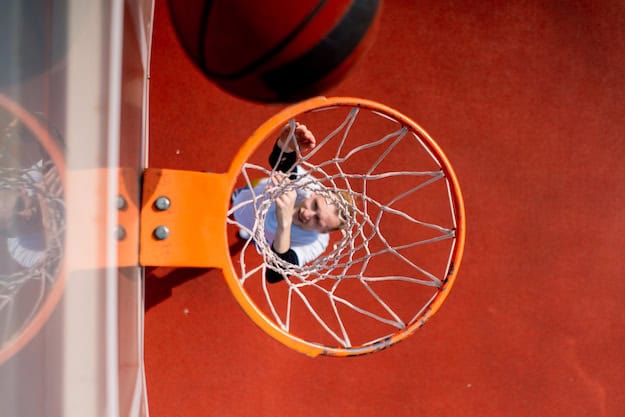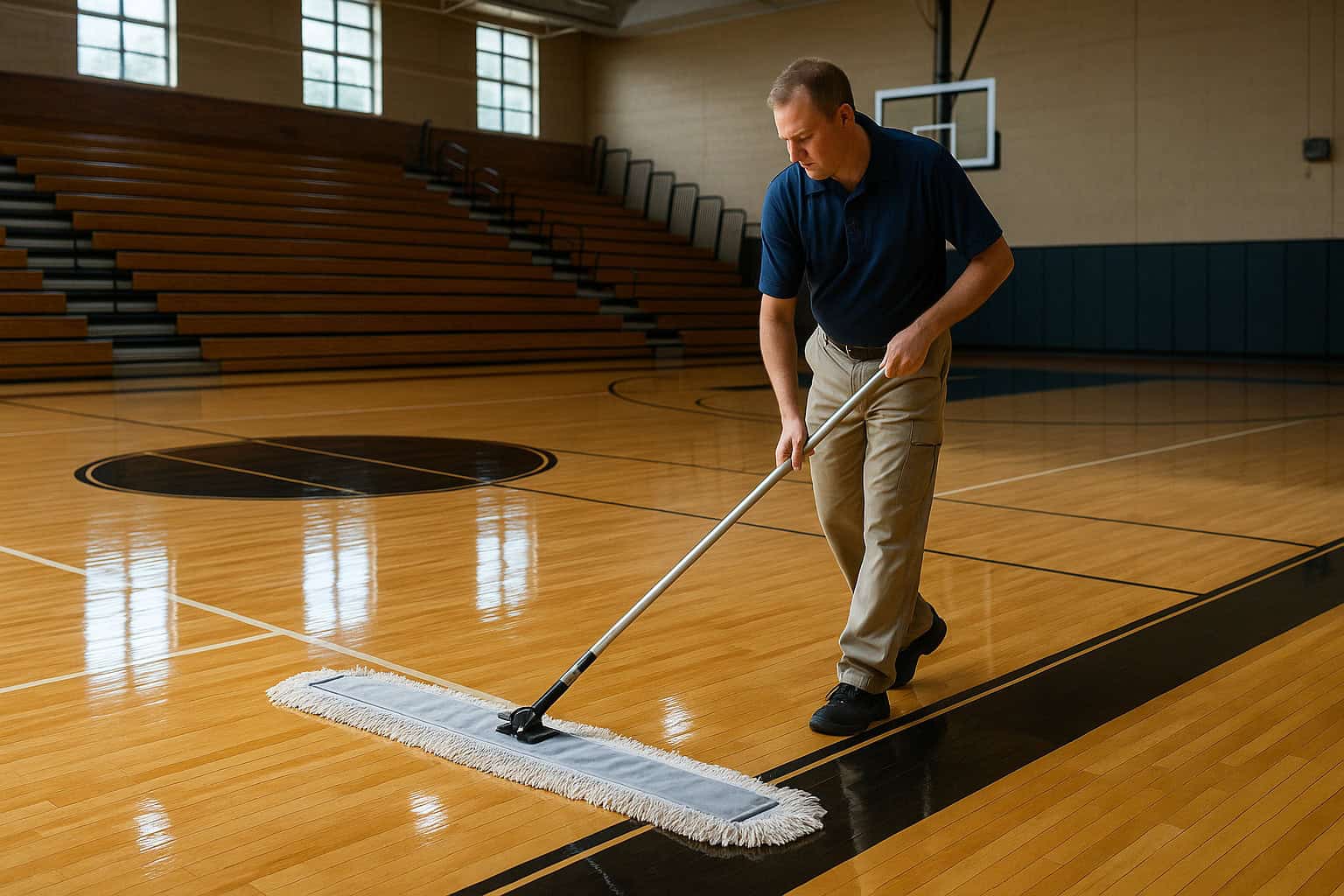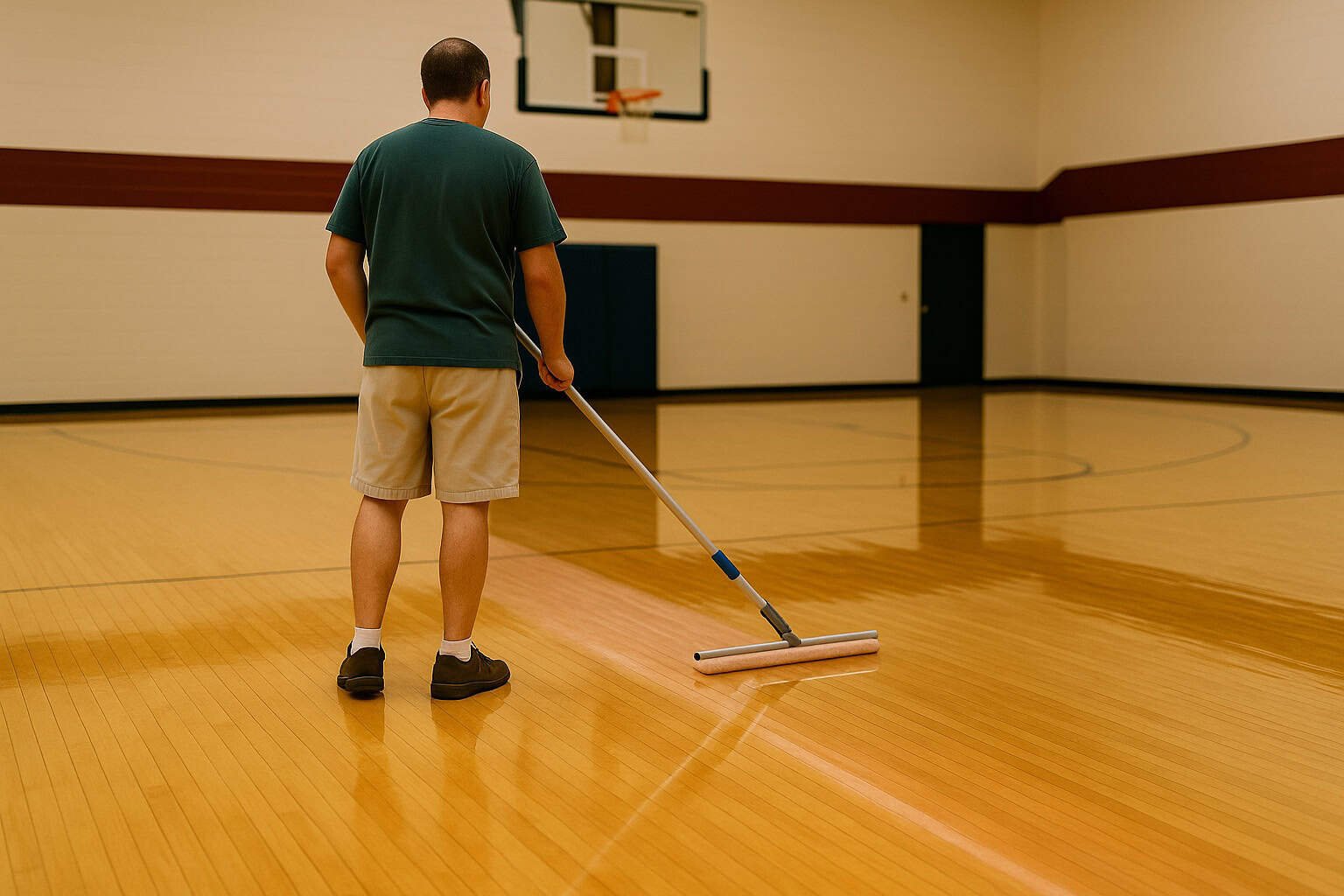Introduction
Synthetic sports floors—such as vinyl, rubber, or polyurethane offer durability and versatility for multi-use facilities. But even the toughest synthetic surface needs consistent cleaning. Daily dust-mopping and weekly damp-mopping remove abrasive particles, prevent stains, and preserve traction. Follow this simple routine to keep your synthetic court safe, attractive, and long-lasting.
Daily Maintenance
Dust-Mopping & Sweeping
- Why: Grit, dust, and small debris scratch the wear layer, leading to dull or worn spots. Synthetic floors are less forgiving than you might think—tiny particles act like sandpaper over time.
- Frequency:
- Minimum: Once a day (before any events or practice).
- Ideal: Twice per day during heavy-use periods (e.g., league nights, tournaments).
- Tool:
- Treated Cotton or Microfiber Dust Mop (60″ head or larger).
- Technique:
- Always begin with a clean dust mop head.
- Move the mop head in straight, overlapping strokes across the floor.
- Shake out or vacuum the head after each session so it remains effective.
Spills & Spot-Cleaning
- Why: Spills from water, coffee, or sports drinks can stain vinyl or create slippery patches. Rubber floors can absorb oils if not cleaned properly.
- Frequency: Immediately when a spill is detected.
- Tool & Cleaner:
- Microfiber Towels to blot up liquids instantly—never let them pool.
- Neutral pH Cleaner (e.g., Tac-Tite Floor Cleaner or Citra-Blaze) safe on most synthetic floors.
- Technique:
- Blot the spill with a microfiber towel until completely dry.
- If residue remains, lightly mist with neutral cleaner, wipe with a clean towel, then dry.
Entry Mats & Shoe Policies
- Why: Outdoor debris, salt, or mud tracked in will scratch and dull the surface.
- Best Practices:
- Install heavy-duty walk-off mats at every entrance. Vacuum or shake them daily.
- Enforce a “no-street-shoes” policy: only allow clean athletic shoes with non-marking soles.
- For snow/salt seasons, add a secondary mat inside the door to catch grit.
Weekly Maintenance
Dust Mop First
- Start with a thorough dust mop to remove loose dirt. This prevents your weekly “wet” cleaning from simply moving debris around.
Damp-Mopping or Auto-Scrubbing
- Damp Mopping:
- Dust mop.
- Fill a bucket with warm water + neutral pH cleaner (e.g., Tac-Tite).
- Wring a microfiber or terry pad until it’s only slightly damp, no dripping. The CourtClean 6′ Unit makes the damp mop process quick and easy.
- Mop in straight, overlapping passes. Immediately dry any wet spots with a towel.
- Auto-Scrubbing (If Permitted By Manufacture):
- Use a low-speed machine with white or red non-abrasive pads.
- Set water flow to low—no standing moisture allowed.
- Inspect squeegees before use to ensure all water is removed.
- Limit to once a week; too frequent scrubbing can wear the wear layer.
Recommended Tools:
- CourtClean 6′ Damp Mop Unit – wide coverage, leaves floor nearly dry. CourtClean 6′ Unit (damp mop)
- Tac-Tite Speed Mop System – ergonomic, uses microfiber pads. Tac-Tite
Conclusion
Daily dust-mopping, prompt spot-cleaning, and a weekly damp mop (or auto-scrub with a red/white pad) prevent abrasive wear and keep your synthetic floor safe. Consistent adherence to this schedule maintains the surface’s slip resistance and aesthetic appeal—saving you from expensive repairs later.
Next Article: Monthly & Seasonal Synthetic Sports Floor Maintenance
